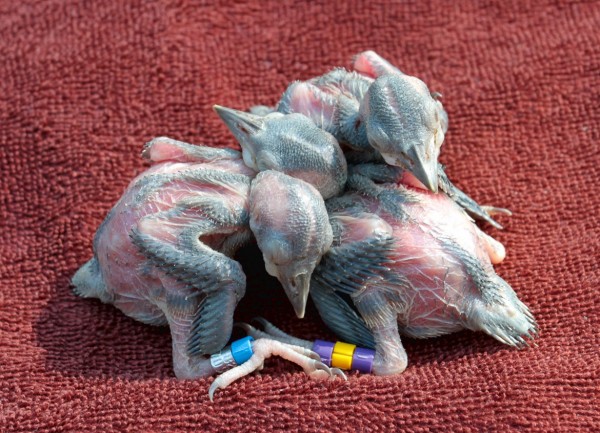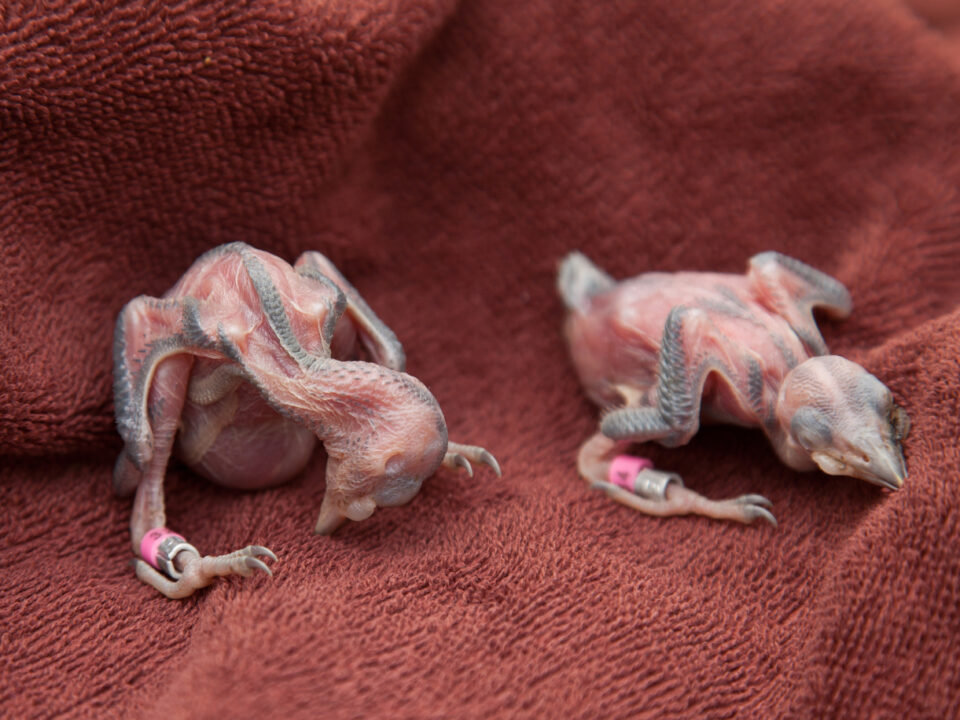Red-cockaded Woodpeckers fledge 20 birds at Piney Grove Preserve
Bald Eagle KW Released at Mariners’ Museum July 23, 2013
July 24, 2013Camellia Back at Pocaty River Aug 4 2013
August 5, 2013
The Red-cockaded Woodpecker population at the Nature Conservancy’s Piney Grove Preserve had another good year of productivity in 2013 with the successful fledging of 20 birds from 9 breeding pairs. This is the third consecutive year the population has produced at least 20 fledglings following bumper yields of 25 and 26 birds for 2011 and 2012, respectively. The slightly lower productivity for 2013 compared to the previous 2 years was due to a combination of one group not breeding and a lower than normal number of fledglings among the remaining breeding groups. However, among the successful breeders this year was a 13 year old male that has remained on his natal territory and has held onto breeding status there since 2005.

Eight-day old Red-cockaded Woodpecker nestlings with color bands. Photo by Bryan Watts.
The Piney Grove Preserve supports the only population of Red-cockaded Woodpeckers in Virginia and is the northernmost location for the species in the world. Since 2001, the number of birds and breeding groups has tripled with the help of population management, translocation, cavity competitor control, artificial cavity installation, and a well-orchestrated regime of habitat management that includes prescribed fire and selective tree removal. Currently, the population contains 51 adult birds and the 20 new fledglings (10 males and 10 females). We will follow up with another census in winter to determine the status and distribution of all individuals in the population. Typically, only 50-75% of the fledgling birds are still present during the winter survey.
Written by
Mike Wilson | mdwils@wm.edu | (757) 221-1649
July 24, 2013
Related posts
Adult female from Elkins Chimney territory. Both the female and male were lost from this site between 2024 and 2025 nesting seasons and were not replaced. This territory has been occupied since 1995. Five territories were vacated between 2024 and 2025 along the Delmarva Peninsula in VA. Photo by Bryan Watts



